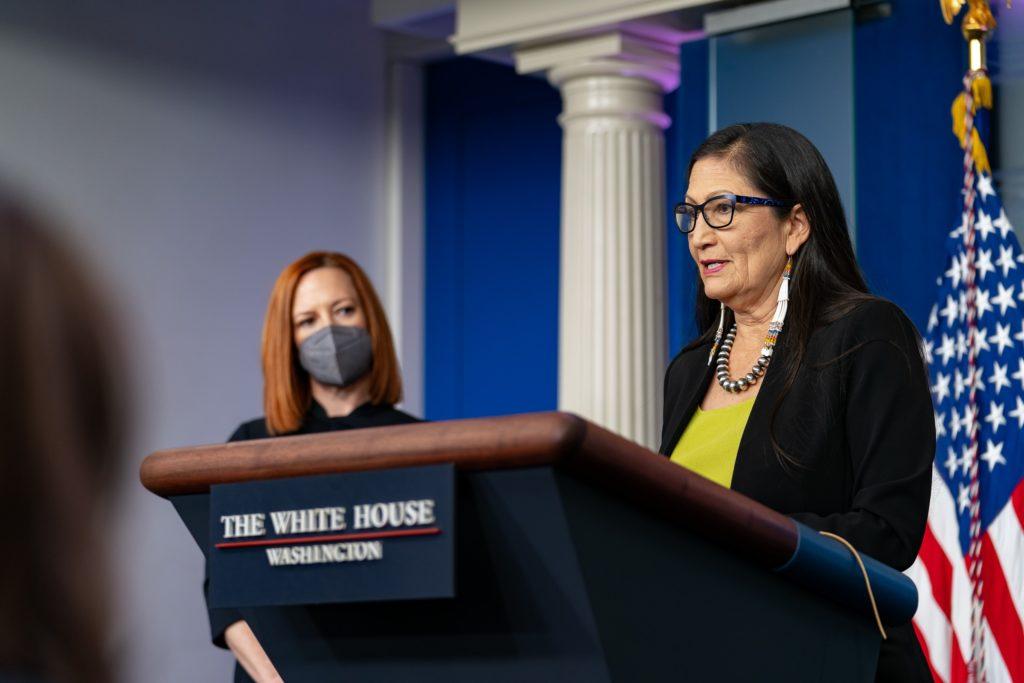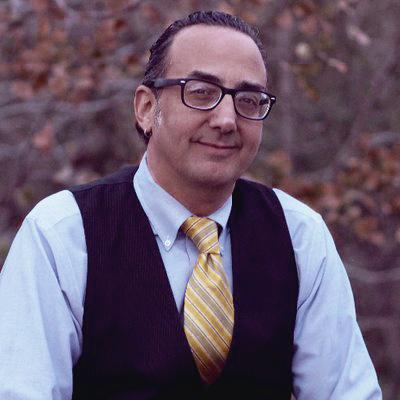“The investigation found that from 1819 to 1969, the federal Indian boarding school system consisted of 408 federal schools across 37 states or then territories, including 21 schools in Alaska and 7 schools in Hawaii”
Secretary of the Interior Deb Haaland and Assistant Secretary for Indian Affairs Bryan Newland released on Wednesday, May 11, 2022, Volume 1 of the Federal Indian Boarding School Initiative.
The 106-page investigative report, according to the DOI’s press announcement, is “a comprehensive effort to address the troubled legacy of federal Indian boarding school policies. This report lays the groundwork for the continued work of the Interior Department to address the intergenerational trauma created by historical federal Indian boarding school policies.”
The announcement also stated: “This investigative report is a significant step by the federal government to comprehensively address the facts and consequences of its federal Indian boarding school policies—implemented for more than a century and a half—resulting in the twin goals of cultural assimilation and territorial dispossession of Indigenous peoples through the forced removal and relocation of their children. It reflects an extensive and first-ever inventory of federally operated schools, including profiles and maps.”
The report also highlights startling statistics largely unknown and/or untaught in schools.
Section 14 in the report, titled Federal Indian Boarding School List cited the following:
Through the Federal Indian Boarding School Initiative, the Department details the first official list of Federal Indian boarding schools operated or supported by the United States. Under its Memorandum of Understanding with NABS, the Department cross-referenced its list with that of NABS to secure comprehensive identification of schools in the Federal Indian boarding school system. Each site met the four required criteria: (1) housing, (2) education, (3) Federal support, and (4) timeframe. The list details that the Department operated or supported 408 Federal Indian boarding schools across 37 states or then-territories, including 21 schools in Alaska and 7 schools in Hawaii. Given that an individual Federal Indian boarding school may account for multiple sites, the 408 Federal Indian boarding schools comprised 431 specific sites.
The DOI release stated: “The investigation found that from 1819 to 1969, the federal Indian boarding school system consisted of 408 federal schools across 37 states or then territories, including 21 schools in Alaska and 7 schools in Hawaii. The investigation identified marked or unmarked burial sites at approximately 53 different schools across the school system. As the investigation continues, the Department expects the number of identified burial sites to increase.”
“The consequences of federal Indian boarding school policies—including the intergenerational trauma caused by the family separation and cultural eradication inflicted upon generations of children as young as 4 years old—are heartbreaking and undeniable,” said Secretary Haaland in the release.
“We continue to see the evidence of this attempt to forcibly assimilate Indigenous people in the disparities that communities face. It is my priority to not only give voice to the survivors and descendants of federal Indian boarding school policies but also to address the lasting legacies of these policies so Indigenous peoples can continue to grow and heal.”

“This report presents the opportunity for us to reorient federal policies to support the revitalization of Tribal languages and cultural practices to counteract nearly two centuries of federal policies aimed at their destruction,” said Assistant Secretary Newland in the announcement.
“Together, we can help begin a healing process for Indian Country, the Native Hawaiian Community and across the United States, from the Alaskan tundra to the Florida everglades, and everywhere in between,” said Newland.
Ruth Buffalo, who is Mandan, Hidatsa and Arikara and a member of the North Dakota House of Representatives from the 27th district shared her views with Native Viewpoint, which she had also posted to Facebook.
“By addressing the trauma of an entire population, we are moving forward towards healing and justice. In order for that to happen, these injustices must of course be acknowledged in the first place. Although many of the people who enacted these horrible traumas are gone, the institutions that benefited from those actions are still here, as are the impacts,” she said.
“We must keep open minds and hearts, and take this opportunity collectively to enact healing. This is needed … We need trauma-informed care and support in place now more than ever. For the survivors, descendants, families, and communities.”
State Rep. Buffalo is also the second vice president of the National Native American Boarding School Healing Coalition in Minneapolis.
Federal Indian Boarding School Initiative
In June of 2021 at the National Congress of American Indians 2021 Mid Year Conference, Interior Secretary Haaland announced the Federal Indian Boarding School Initiative, described as “a comprehensive review of the troubled legacy of federal boarding school policies.”
In her remarks, Secretary Haaland stated “The Interior Department will address the inter-generational impact of Indian boarding schools to shed light on the unspoken traumas of the past, no matter how hard it will be … I know that this process will be long and difficult. I know that this process will be painful. It won’t undo the heartbreak and loss we feel. But only by acknowledging the past can we work toward a future that we’re all proud to embrace.”
Haaland’s remarks came at approximately the same time as the 2021 discovery of 215 unmarked graves at the Kamloops Indian Residential School in Canada.
As described in the DOI release, “As part of the Federal Indian Boarding School Initiative and in response to recommendations from the report, Secretary Haaland today announced the launch of “The Road to Healing.” This year-long tour will include travel across the country to allow American Indian, Alaska Native, and Native Hawaiian survivors of the federal Indian boarding school system the opportunity to share their stories, help connect communities with trauma-informed support, and facilitate the collection of a permanent oral history.”
“The Department’s work thus far shows that an all-of-government approach is necessary to strengthen and rebuild the bonds within Native communities that federal Indian boarding school policies set out to break,” added Secretary Haaland. “With the President’s direction, we have begun working through the White House Council of Native American Affairs on the path ahead to preserve Tribal languages, invest in survivor-focused services, and honor our obligations to Indigenous communities. We also appreciate the ongoing engagement and support for this effort from Members of Congress and look forward to continued collaboration.”
About Volume 1 of the report
The U.S. Department of the Interior described Volume 1 of the report as follows:
Volume 1 of the report highlights some of the conditions children endured at these schools and raises important questions about the short- and long-term consequences of the federal Indian boarding school system on American Indian, Alaska Native, and Native Hawaiian communities.
The investigation found that the federal Indian boarding school system deployed systematic militarized and identity-alteration methodologies in an attempt to assimilate American Indian, Alaska Native, and Native Hawaiian children through education, including but not limited to renaming Indian children from Indian to English names; cutting the hair of Indian children; discouraging or preventing the use of American Indian, Alaska Native, and Native Hawaiian languages, religions and cultural practices; and organizing Indian and Native Hawaiian children into units to perform military drills.
Despite assertions to the contrary, the investigation found that the school system largely focused on manual labor and vocational skills that left American Indian, Alaska Native, and Native Hawaiian graduates with employment options often irrelevant to the industrial U.S. economy, further disrupting Tribal economies.
The COVID-19 pandemic and its resulting closures of federal facilities reflect the need for further investigation. The report identifies the next steps that will be taken in a second volume, aided by a new $7 million investment from Congress through the fiscal year 2022.
Recommendations by Assistant Secretary Newland include producing a list of marked and unmarked burial sites at federal Indian boarding schools and an approximation of the total amount of federal funding used to support the federal Indian boarding school system, and further investigation to determine the legacy impacts of the school system on American Indian, Alaska Native, and Native Hawaiian communities today.
About the U.S. Department of the Interior
The Department of the Interior (DOI) conserves and manages the Nation’s natural resources and cultural heritage for the benefit and enjoyment of the American people, provides scientific and other information about natural resources and natural hazards to address societal challenges and create opportunities for the American people, and honors the Nation’s trust responsibilities or special commitments to American Indians, Alaska Natives, and affiliated island communities to help them prosper.
About the National Native American Boarding School Healing Coalition
The National Native American Boarding School Healing Coalition’s mission is “To lead in the pursuit of understanding and addressing the ongoing trauma created by the U.S. Indian Boarding School policy.” The National Native American Boarding School Healing Coalition (NABS) was incorporated as a 501(c)3 nonprofit in June 2012 under the laws of the Navajo Nation. The National Native American Boarding School Healing Coalition is a membership organization comprised of over 80 Native and Non-Native members and organizations committed to boarding school healing. Their website is https://boardingschoolhealing.org.
Editor’s note: My own grandmother, my Tota, attended boarding school as a child, as did her sister, cousins and other relatives. These discoveries are simply the beginning as more are certain to be discovered. In short, this initial report, and these initial findings and discoveries are simply the proverbial “tip of the iceberg.”
There will be much more to come. Blessings and healing to the families to the families affected by Indian boarding and residential schools.
Did you enjoy this story without ads?
Native Viewpoint does not use ads on its website and articles to allow readers the ability to enjoy the story without distractions. If you enjoy reading this and other articles, please support and donate to Native Viewpoint by clicking here.
Editor and co-founder of Native Viewpoint, Vincent Schilling, Akwesasne Mohawk

Vincent Schilling, Akwesasne Mohawk, is the founder and editor of Native Viewpoint. With nearly 20 years of experience as a Native journalist and former member of the White House Press Pool, Vincent works to uplift underrepresented voices in the world of media and beyond. Follow Vincent on YouTube.com/VinceSchilling, on Twitter at @VinceSchilling or on any other of his social media accounts by clicking on any of the icons below.
Support Native Viewpoint a Native multimedia website, by clicking here.